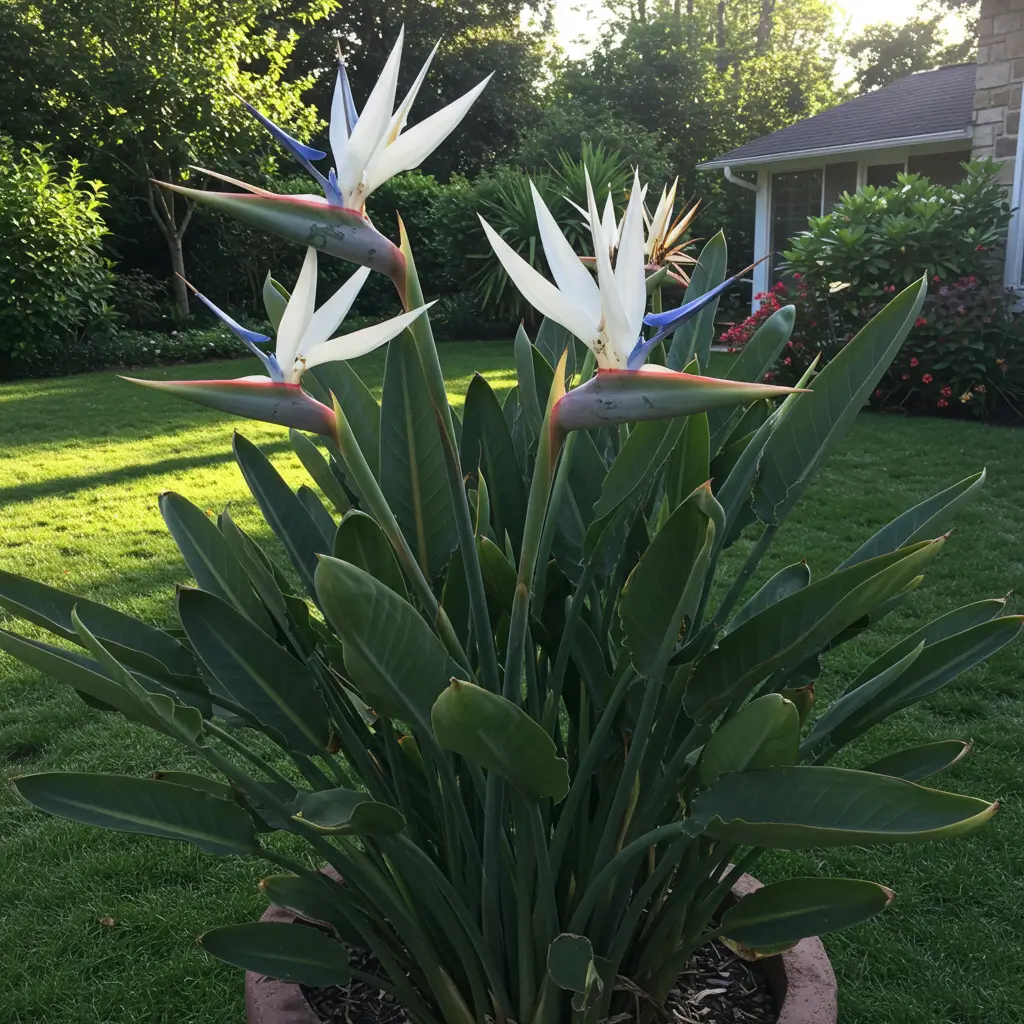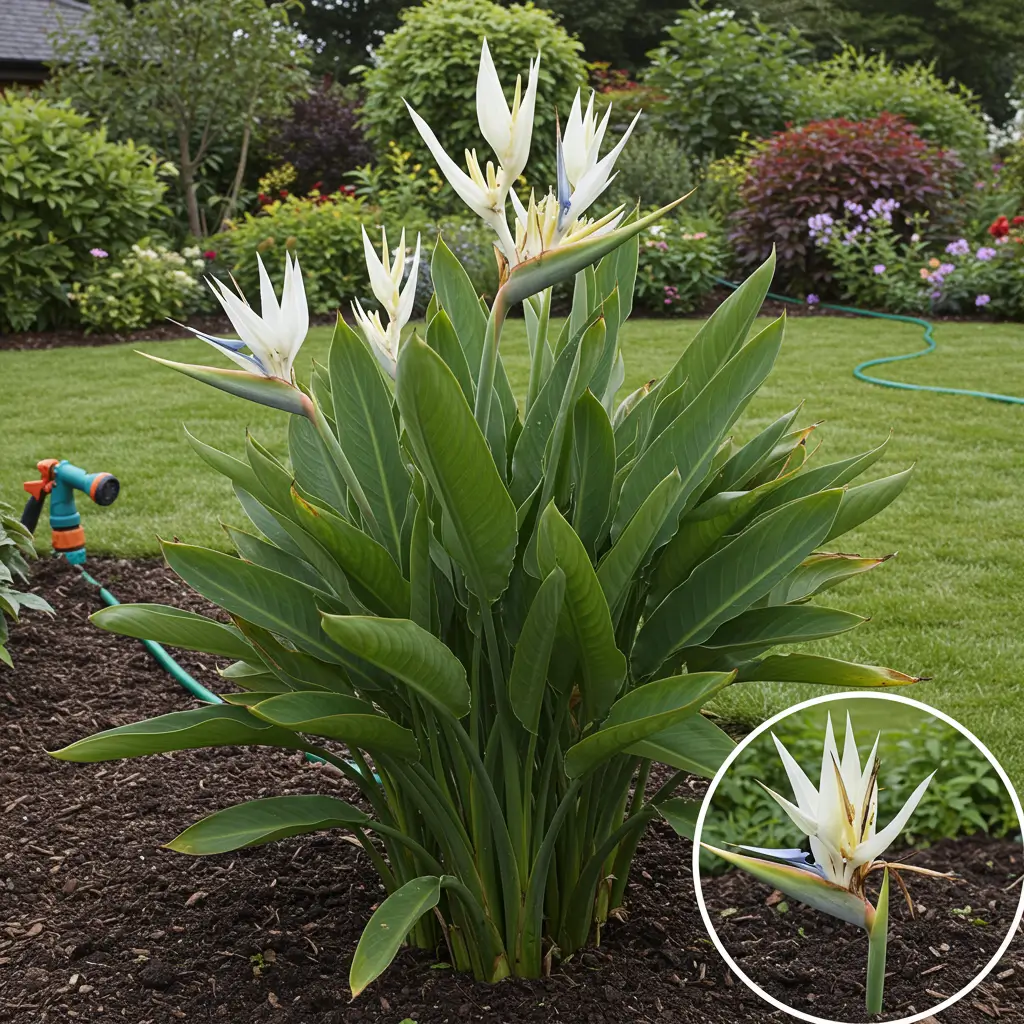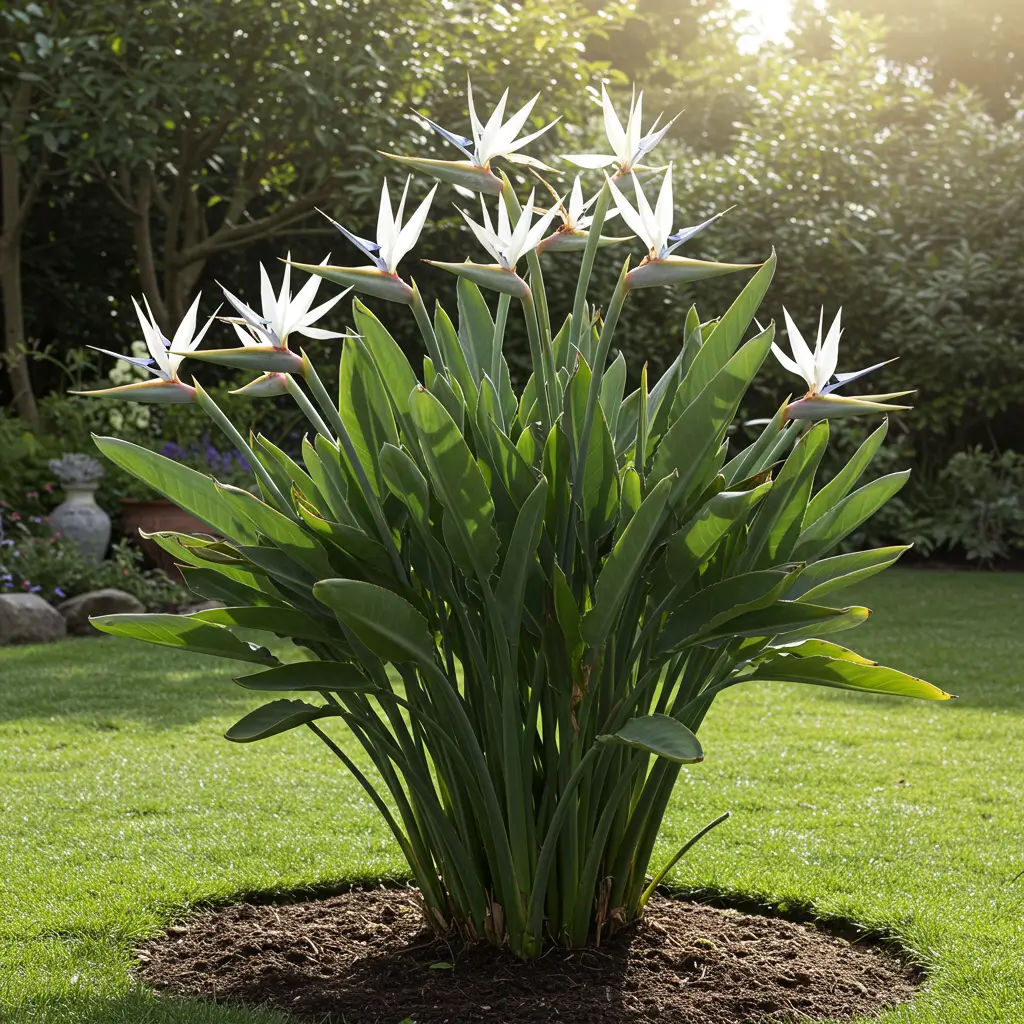The White Bird of Paradise (Strelitzia nicolai) is a breathtaking tropical plant that can transform any outdoor space into a lush, exotic paradise. Known for its large, banana-like leaves and striking appearance, this plant is a favorite among gardeners and plant enthusiasts. However, caring for it outdoors requires attention to detail to avoid common mistakes that can hinder its growth. In this comprehensive guide, we’ll walk you through everything you need to know about White Bird of Paradise outdoor care, from ideal growing conditions to troubleshooting common issues.
Introduction to White Bird of Paradise Outdoor Care
What is a White Bird of Paradise (Strelitzia nicolai)?
The White Bird of Paradise is a tropical perennial native to South Africa. It’s part of the Strelitziaceae family and is closely related to the more colorful Bird of Paradise (Strelitzia reginae). With its large, glossy green leaves and towering height, it’s a popular choice for outdoor gardens, patios, and tropical landscapes. This plant can grow up to 20-30 feet tall in ideal conditions, making it a dramatic focal point in any garden.
Why Proper Outdoor Care is Essential
While the White Bird of Paradise is relatively low-maintenance, improper care can lead to issues like yellowing leaves, stunted growth, or even plant death. Understanding its needs is key to keeping it healthy and vibrant. Many gardeners make the mistake of assuming it can thrive in any condition, but this plant has specific requirements for sunlight, water, and soil.
Benefits of Growing White Bird of Paradise Outdoors
This plant not only adds a tropical flair to your garden but also acts as a natural air purifier. Its large leaves can create shade, and when it blooms, its unique white flowers are a sight to behold. Additionally, the White Bird of Paradise is relatively pest-resistant and can adapt to a variety of outdoor environments, making it a versatile choice for gardeners.
Ideal Growing Conditions for White Bird of Paradise Outdoors

Sunlight Requirements: Full Sun vs. Partial Shade
The White Bird of Paradise thrives in bright, indirect light but can tolerate partial shade. While it loves sunlight, too much direct sun can scorch its leaves. Aim for a spot with morning sun and afternoon shade, especially in hotter climates. If you live in a region with intense sunlight, consider using a shade cloth to protect the plant during the hottest part of the day.
Soil Requirements for Healthy Growth
Well-draining soil is crucial for this plant. Use a mix of potting soil, sand, and perlite to ensure proper drainage. Avoid heavy clay soils, as they can lead to root rot. The ideal soil pH for White Bird of Paradise is slightly acidic to neutral (6.0-7.5). If you’re planting in the ground, amend the soil with organic matter like compost to improve its texture and nutrient content.
Temperature and Humidity Tolerance
This tropical plant prefers warm temperatures between 65°F and 85°F and thrives in high humidity. If you live in a cooler climate, consider bringing it indoors during winter or providing frost protection. In areas with low humidity, mist the leaves regularly or use a humidifier to create a more tropical environment.
Watering Needs: Avoiding Overwatering and Underwatering
Water your White Bird of Paradise deeply but infrequently. Allow the top 2-3 inches of soil to dry out between waterings. Overwatering can cause root rot, while underwatering can lead to dry, crispy leaves. During the growing season (spring and summer), you may need to water more frequently, while in winter, reduce watering to prevent waterlogged soil.
Common Mistakes in White Bird of Paradise Outdoor Care
Overwatering and Root Rot
One of the most common mistakes is overwatering, which can lead to root rot. Signs include yellowing leaves, a foul smell from the soil, and wilting despite moist soil. To prevent this, ensure your soil drains well and adjust your watering schedule based on the season. If you suspect root rot, remove the plant from the soil, trim away affected roots, and repot it in fresh, well-draining soil.
Insufficient Sunlight or Too Much Direct Sun
While this plant loves light, too much direct sun can burn its leaves, while too little can stunt its growth. Find a balance by placing it in a spot with bright, filtered light. If you notice the leaves turning brown or crispy, it may be getting too much sun. On the other hand, if the plant appears leggy or isn’t growing well, it may need more light.
Poor Soil Drainage and Its Consequences
Using the wrong soil can suffocate the roots and cause waterlogging. Always use a well-draining soil mix and consider adding mulch to retain moisture without over-saturating the roots. If you’re planting in a container, ensure it has drainage holes to prevent water from pooling at the bottom.
Neglecting Pest Control (Spider Mites, Scale, etc.)
White Bird of Paradise plants can attract pests like spider mites and scale. Regularly inspect the leaves and stems, and treat infestations with neem oil or insecticidal soap. Spider mites are tiny and often appear as fine webbing on the leaves, while scale insects look like small, brown bumps. Early detection and treatment are key to preventing these pests from causing significant damage.
Seasonal Care Tips for White Bird of Paradise Outdoors

Summer Care: Maximizing Growth and Flowering
During the growing season, water regularly and fertilize every 4-6 weeks with a balanced fertilizer. This will encourage lush growth and, if conditions are right, flowering. White Bird of Paradise plants typically bloom in late spring or early summer, producing stunning white and blue flowers. To encourage blooming, ensure the plant receives adequate sunlight and nutrients.
Winter Care: Protecting from Cold and Frost
In cooler climates, protect your plant from frost by covering it or moving it indoors. Reduce watering during winter, as the plant’s growth slows down. If you live in an area with harsh winters, consider growing the plant in a container so you can easily bring it indoors when temperatures drop.
Pruning and Maintenance Throughout the Year
Prune dead or damaged leaves to keep the plant looking tidy and to encourage new growth. Use clean, sharp pruning shears to avoid damaging the plant. Regular pruning also helps improve air circulation, reducing the risk of fungal diseases.
Fertilizing Schedule for Optimal Growth
Feed your White Bird of Paradise with a slow-release fertilizer during the growing season. Avoid over-fertilizing, as this can lead to salt buildup in the soil. A balanced fertilizer with equal parts nitrogen, phosphorus, and potassium (e.g., 10-10-10) is ideal for promoting healthy growth and flowering.
For more detailed tips on caring for your White Bird of Paradise outdoor, check out this comprehensive guide
Troubleshooting and FAQs About White Bird of Paradise Outdoor Care
Why Are My White Bird of Paradise Leaves Turning Yellow?
Yellow leaves can be caused by overwatering, nutrient deficiency, or pests. Check the soil moisture, inspect for pests, and adjust your care routine as needed. If the problem persists, consider testing the soil pH and nutrient levels to ensure the plant is getting the right balance of nutrients.
How to Encourage Flowering in White Bird of Paradise
Flowering requires plenty of sunlight, proper fertilization, and patience. Mature plants are more likely to bloom, so give it time to establish itself. If your plant isn’t flowering, try increasing the amount of sunlight it receives and ensure it’s getting enough nutrients.
Can White Bird of Paradise Survive in Cold Climates?
While it prefers warm climates, it can survive in cooler regions with proper protection. Mulch the base and cover the plant during frosty nights. If you live in an area with harsh winters, consider growing the plant in a container so you can easily bring it indoors when temperatures drop.
How to Revive a Struggling White Bird of Paradise
If your plant is struggling, check for root rot, adjust watering, and ensure it’s getting the right amount of light. Repotting in fresh soil can also help. If the leaves are severely damaged, prune them back to encourage new growth. With proper care, your plant should recover and thrive.
Conclusion
Caring for a White Bird of Paradise outdoors can be incredibly rewarding if you avoid common mistakes and provide the right conditions. By following this guide, you’ll be well on your way to growing a healthy, vibrant plant that adds a touch of the tropics to your garden. Have questions or tips of your own? Share them in the comments below!

